#philippe duke of orleans
Text







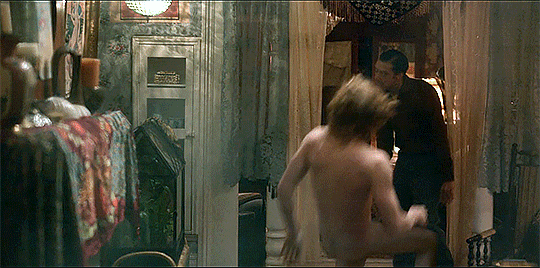
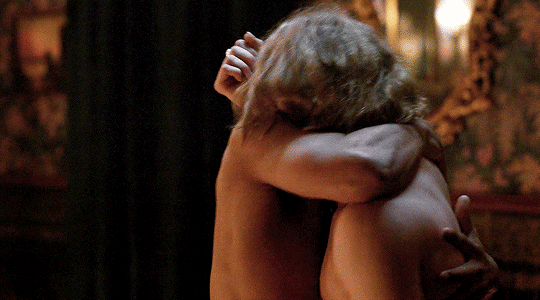
My favourite couples 🔥🙌
gallavich•monchevy•louistat
#gallavich#ian × mickey#shameless#monchevy#philippe duke of orleans#chevalier de lorraine#versailles#interview with the vampire#lestat de lioncourt#louis du pointe du lac#louistat
159 notes
·
View notes
Text

✨M. de Lorraine’s Jealousy✨
The Duc d’Orléans uttered a cry of delight on perceiving the Chevalier de Lorraine. “This is fortunate, indeed,” he said; “by what happy chance do I see you? Had you indeed disappeared, as every one assured me?”
“Yes, monseigneur.”
“A caprice?”
„Le vicomte de Bragelonne” - A. Dumas
#small artist#small artwork#chevalier de lorraine#versailles#evan williams#monchevy#versailles fanart#alexander vlahos#philippe duke of orleans#versailles season 2#Le vicomte de Bragelonne
39 notes
·
View notes
Text
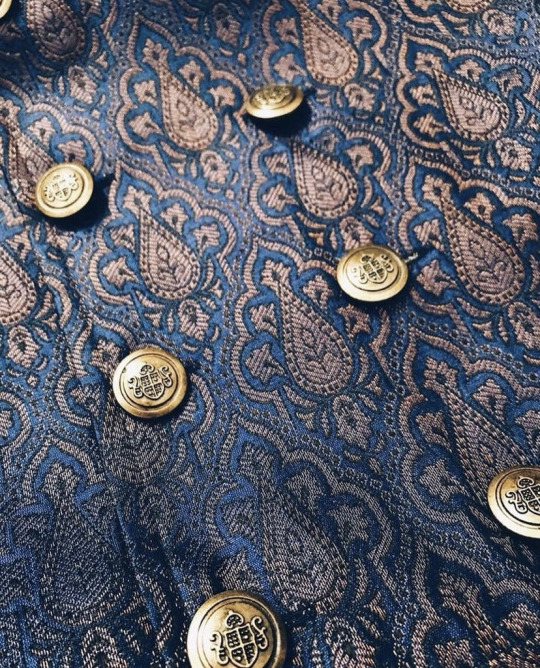
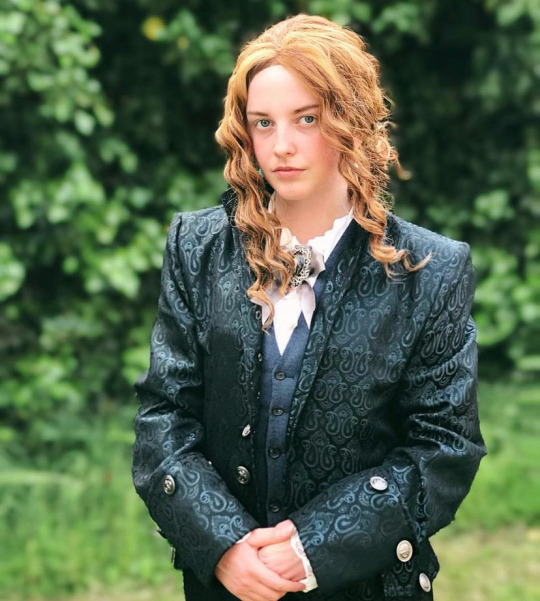

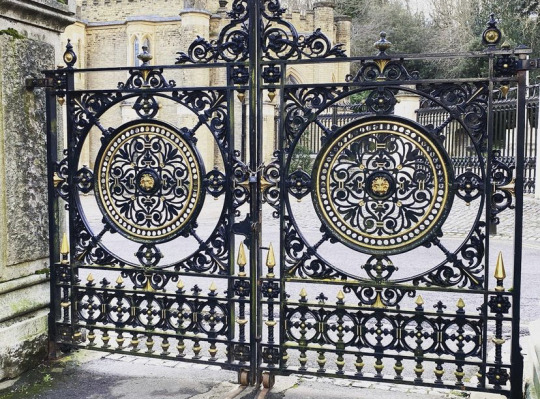

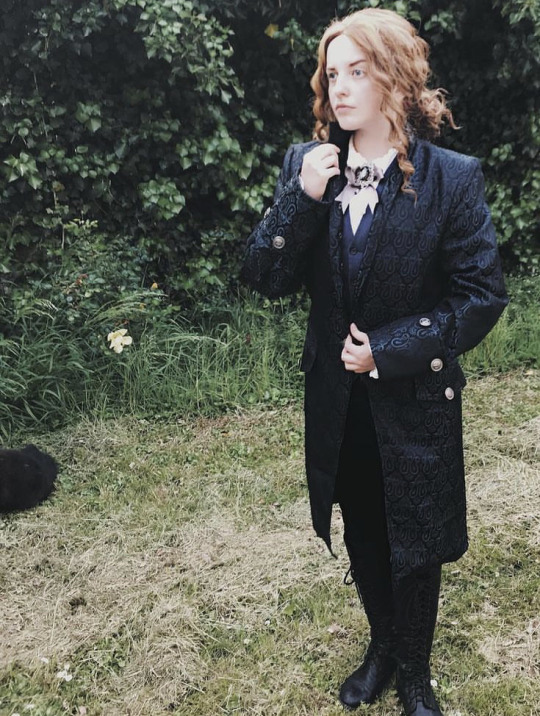
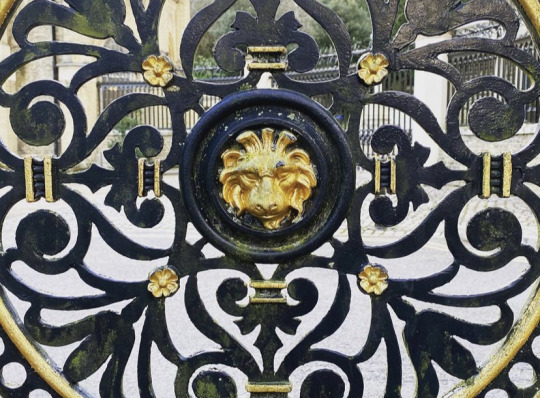
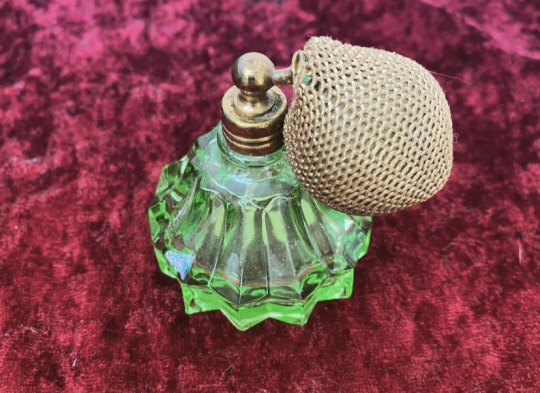
“He might be the sun my dear. But you, are the star. I do not know if you’ve noticed, if if the sun rules of the day, it is the stars that ruled a night.”
#chevalier de lorraine#monchevy#all location and item shots taken and edited by me#the chevalier cosplay#chevalier cosplay#chevalier x philippe#Versailles la serie#versailles#chateau de versailles#the sun king#french history#monchevy cosplay#evan williams#philippe d'orléans#philippe duke of orleans#period drama#period drama costumes#cosplayer#my cosplays#cosplay#Versailles cosplay#moodboards#aesthetic moodboard#gay historical figures#bisexual history#bisexual historical figures#queer history#gay man#long haired men
33 notes
·
View notes
Text

A mythological portrait of King Louis XIV and the French royal family by French painter Jean Nocret.
#king louis xiv#philippe duke of orleans#henriette anne stuart#anne marie louise of orleans#queen henrietta maria#anne of austria#maria theresa of spain#louis grand dauphin#marie therese madame royale#philippe charles duke of anjou#marguerite louise of orleans#elisabeth marguerite of orleans#francoise madeleine of orleans#royal painting#art
14 notes
·
View notes
Text
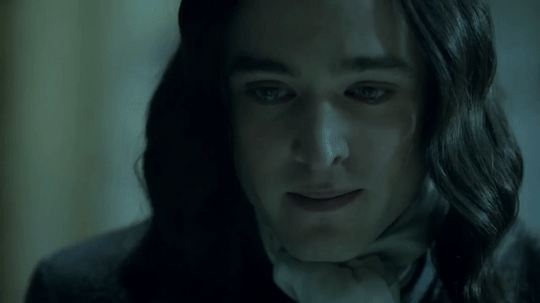

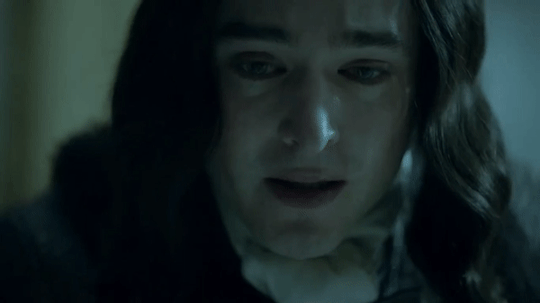
#versailles#versailles gif#philippe d'orléans#philippe d'orléans gif#philippe of orleans#philippe of orleans gif#duc d'orléans#duke of orleans#alexander vlahos#alexander vlahos gif
45 notes
·
View notes
Text
work on tomgreg cannibalism fic after lectures tomorrow or find a book on philippe i duke of orleans in the uni library and read it until closing time
#'your uni library has a closing time?' yes it used to be 24 hours but now it sucks#not making this a poll i dont care ill do what i feel like. and it will be philippe i duke of orleans biography#shut up ulrike#tomgreg
9 notes
·
View notes
Text
someone’s dog-eared this library copy of saint-simon’s memoirs on the page where it says ‘... the Chevalier de Lorraine [...] ruled Monsieur in everything. He had been compellingly handsome; Monsieur’s taste was not for women; he made no attempt to disguise it; he had taken the Chevalier de Lorraine for his master and so he remained for the rest of his life.”
#sorry ive regressed to 2017 17th century france ulrike#ulrikecore#philippe i duke of orleans#philippe chevalier de lorraine#henri de saint-simon#history#shut up ulrike
8 notes
·
View notes
Text
Ages of English Princesses at First Marriage
I have only included women whose birth dates and dates of marriage are known within at least 1-2 years, therefore, this is not a comprehensive list. The average age at first marriage among these women was 16.
This list is composed of princesses of England when it was a sovereign state, prior to the Acts of Union in 1707.
Eadgyth (Edith) of England, daughter of Edward the Elder: age 20 when she married Otto the Great, Holy Roman Emperor in 930 CE
Godgifu (Goda) of England, daughter of Æthelred the Unready: age 20 when she married Drogo of Mantes in 1024 CE
Empress Matilda, daughter of Henry I: age 12 when she married Henry, Holy Roman Emperor, in 1114 CE
Marie I, Countess of Boulogne, daughter of Stephen of Blois: age 24 when she was abducted from her abbey by Matthew of Alsace and forced to marry him, in 1136 CE
Matilda of England, daughter of Henry II: age 12 when she married Henry the Lion in 1168 CE
Eleanor of England, daughter of Henry II: age 9 when she married Alfonso VIII of Castile in 1170 CE
Joan of England, daughter of Henry II: age 12 when she married William II of Sicily in 1177 CE
Joan of England, daughter of John Lackland: age 11 when she married Alexander II of Scotland in 1221 CE
Isabella of England, daughter of John Lackland: age 21 when she married Frederick II, Holy Roman Emperor, in 1235 CE
Eleanor of England, daughter of John Lackland: age 9 when she married William Marshal, Earl of Pembroke in 1224 CE
Margaret of England, daughter of Henry III: age 11 when she married Alexander III of Scotland in 1251 CE
Beatrice of England, daughter of Henry III: age 17 when she married John II, Duke of Brittany in 1260 CE
Eleanor of England, daughter of Edward I: age 24 when she married Henry III, Count of Bar in 1293 CE
Joan of Acre, daughter of Edward I: age 18 when she married Gilbert de Clare, Earl of Gloucester in 1290 CE
Margaret of England, daughter of Edward I: age 15 when she married John II, Duke of Brabant in 1290 CE
Elizabeth of Rhuddlan, daughter of Edward I: age 15 when she married John I, Count of Holland in 1297 CE
Eleanor of Woodstock, daughter of Edward II: age 14 when she married Reginald II, Duke of Guelders in 1332 CE
Joan of the Tower, daughter of Edward II: age 7 when she married David II of Scotland in 1328 CE
Isabella of England, daughter of Edward III: age 33 when she married Enguerrand VII, Lord of Coucy in 1365 CE
Mary of Waltham, daughter of Edward III: age 16 when she married John IV, Duke of Brittany in 1361 CE
Margaret of Windsor, daughter of Edward III: age 13 when she married John Hastings, Earl of Pembroke in 1361 CE
Blanche of England, daughter of Henry IV: age 10 when she married Louis III, Elector Palatine in 1402 CE
Philippa of England, daughter of Henry IV: age 12 when she married Eric of Pomerania in 1406 CE
Elizabeth of York, daughter of Edward IV: age 20 when she married Henry VII in 1486 CE
Cecily of York, daughter of Edward IV: age 16 when she married Ralph Scrope in 1485 CE
Anne of York, daughter of Edward IV: age 19 when she married Thomas Howard in 1494 CE
Catherine of York, daughter of Edward IV: age 16 when she married William Courtenay, Earl of Devon in 1495 CE
Margaret Tudor, daughter of Henry VII: age 14 when she married James IV of Scotland in 1503 CE
Mary Tudor, daughter of Henry VII: age 18 when she married Louis XII of France in 1514 CE
Mary I, daughter of Henry VIII: age 38 when she married Philip II of Spain in 1554 CE
Elizabeth Stuart, daughter of James VI & I: age 17 when she married Frederick V, Elector Palatine in 1613 CE
Mary Stuart, daughter of Charles I: age 10 when she married William II, Prince of Orange in 1641 CE
Henrietta Stuart, daughter of Charles I: age 17 when she married Philippe II, Duke of Orleans in 1661 CE
Mary II of England, daughter of James II: age 15 when she married William III of Orange in 1677 CE
Anne, Queen of Great Britain, daughter of James II: age 18 when she married George of Denmark in 1683 CE
27 notes
·
View notes
Text
Interview with a Ghost, or: Royal Ghost Hunters
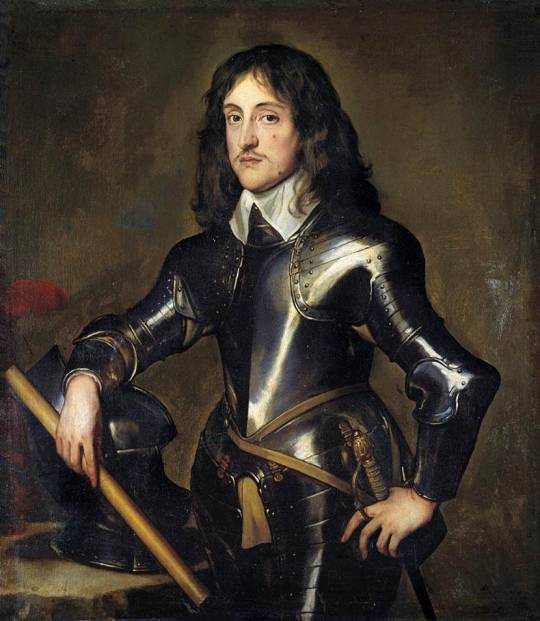
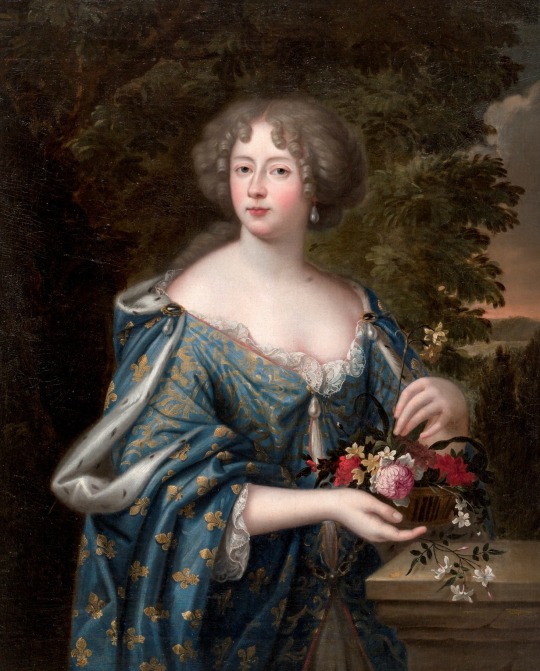

Left to right: ghost hunters Karl Ludwig I. Elector Palatine (1617–1680), his daughter Liselotte von der Pfalz, Duchess of Orleáns (1652–1722), and Friedrich Wilhelm I., King in Prussia (1688–1740).
Since it’s Halloween, I thought I should make a themed post! And what better topic to choose than ghosts? But more often than not, these restless souls wandering between the worlds, preferably at night, are of an entirely earthly origin— especially when bedsheets are involved.
Haunted more by a family history of trouble and turmoil than actual ghosts, let’s look at three Stuart descendants and their brush with the allegedly supernatural:
Karl Ludwig, Elector Palatine and the Ghost of Chain Alley
This first story of a successful ghost hunt concerns Karl Ludwig, Elector Palatine, and was passed from Liselotte von der Pfalz to her much younger half-sister Luise on 22 February 1721.
Zu Heidelberg, ehe Ihr geboren, wurd ein groß Geschrei von einem Gespenst, so alle Nacht mit feurigen Augen und großem Geplärr durch die Kettengaß ging. Ihro Gnaden, der Kurfürst, unser Herr Vater, ließ dem Gespenst aufpassen und fangen; da ertappte man drei oder vier Studenten, so Franzosen waren. — Einer, so Beauregard hieß und des Generals Balthasar Schwager war, der war das Kalb, und die andern, ich glaube Monsieur Dangeaus Bruder, Coursillon, so jetzt Abbé ist, halfen zu der Musik. Wenn man die Gespenster genau examiniert, kommt als so was heraus.
From: Künzel, C. [Ed.], Die Briefe der Liselotte. Liselotte von der Pfalz, Herzogin von Orleans, München 1923, p. 442.
Translation:
[…] At Heidelberg, ere you were born, there was great upheaval on account of a ghost, which would go through the Kettengasse [literal translation: Chain Alley] each night with fiery eyes and a great clamour. His Grace the Elector our father had the ghost waylaid and captured; they caught four students, who were Frenchmen. – One of them by the name of Beauregard was the brother-in-law of General Balthasar, was the calf and the others, I believe the brother of Monsieur Dangeau, Coursillon, who is an abbé [abbot] now [among them], helped make the music. If only you examine ghosts closely, that’s what you’ll uncover.

The location of the Kettengasse in Heidelberg, via Google Maps. Conspicuously close to university buildings, it probably was not hard to guess that the ghost was a student hoax.
The Ghost of the Poisoned Princess: Liselotte Investigates

Henrietta Anne (1644–1670), first wife of Philippe, Duke of Orléans in a posthumous portrait by Peter Lely, and rather fittingly dressed in a white gown.
As can be seen from the story relayed to her half-sister, her father's no-nonsensical attitude set the tone for Liselotte’s own approach to ghostly apparitions— some stories, such as the ghost wandering the conspicuously aptly named Kettengasse, just seem too good to be true.
While not directly involved in the ghost hunt itself, Liselotte, a no-nonsensical person who did not believe in organised religion at large and superstition in particular, remained unphased when a ghostly apparition quickly identified as the wronged and restless soul of her husband’s first wife Henrietta Anne of England started to appear on occasion in a specific spot in the gardens of her residence, Saint Cloud palace. Liselotte, while occasionally chiming in on the rumours that Henrietta Anne may have been poisoned by the Chevalier de Lorraine, her husband’s favourite and her personal arch-nemesis, would have nothing of it and even interviewed the ghost in person:
Es gieng vor vielen Jahren ein Geschrey zu St. Cloud, daß feue Madame Geist im Garten bei einem Brunnen gienge, wo sie sich in der größten Hitze aufgehalten, den der Ort ist sehr kühl. Als des Marêchal de Clerembeaut Lakey Abends wie die Sonne untergegangen war, an dem Brunnen gieng Wasser zu schöpfen, sahe er etwas weisses an dem Brunnen sitzen ohne Figur, das stehet gegen ihm auf, und wird noch einmal so groß; der arme Lakey erschrack und lief weg, wie er aber weiter kam, sagte er: er hätte Madame gesehen, wurde tod krank und starb, der aber damals Capitaine du Chateau war, und wohl denken konnte, daß man dahinter stecken müste, gieng etliche Tage nachher auch zu dem Brunnen, und wie er das Gespenst gehen sahe, drohete er dem Gespenst 100 Prügel zu geben, wofern es nicht sagte, wer es wäre. Das Gespenst sagte: ah! Monsieur de Lastera, ne me faites point de mal, je suis la pauvre Philippinette. Diese war ein alt Weib aus dem Dorfe von 77 Jahren, die keinen Zahn mehr im Maule hatte und böse Augen, einen feuerroten Bord darum, ein groß Maul, eine große Nase; Summa se war abscheulich. Man wollte sie in ein Gefängnis führen, ich bat aber für sie. Sie kam mir zu danken; ich sagte: quelle rage Vous tient de faire l’esprit au lieu de Vous aller coucher? Sie fieng an zu lachen und sagte: je ne puis avoir regret à ce que j’ai fait; à mon âge on dort peu. Il faut bien avoir quelque petite chose pour reveiller l’esprit. Tout ce que j’ai fait dans ma jeunesse ne m’a tant rejouï, que de faire l’ésprit. J’étois bien sure, que ceux qui n’auroient pas peur de mon drap bla[n]c, auroient peur de mon visage. Ceux qui avoient peur, faisoient tant de grimaces, que j’en mourrois de rire. Ce Plaisir nocturne me payoit de la peine d’avoir porté la hotte toute la journée. Den 17ten Novembr. 1716.
From: Veltenheim, August F. von [Ed.], Anekdoten vom Französischen Hofe vorzüglich aus den Zeiten Ludewigs des XIV. und des Duc Regent: aus Briefen der Madame d'Orleans Charlotte Elisabeth, Herzog Philipp I. von Orleans Witwe Welchen noch ein Versuch über die Masque de Fer beigefügt ist, Strassbourg 1789, p. 291 f.
Translation:
Many years ago at St. Cloud, there was a rumour that the ghost of the late Madame [Henrietta Maria of England, first wife of Philippe d’Orléans] was pacing beside a well where she had dwelt in the greatest heat, because this place is exceedingly cool. When a lackey of the Marshal de Clerembeaut went to the well one evening to draw water, he saw something white and shapeless sit beside the well, which, facing him, rose and doubled in size; the poor lackey was startled and ran away, and as he got away, said that he had seen Madame, [then] fell fatally ill and died. But the person who was Capitaine du chateau [steward of the palace] at the time, having decided that one should ascertain what was behind all this, afterwards went to the well for several days as well, and upon seeing the ghost, threatened them with 100 lashes if they would not tell him who they were.
The ghost said: “Ah! Monsieur de Lastera, do me no harm, I am the poor Philippinette.” She was an old woman from the village who was 77 years old and had not a tooth left in her mouth and bloodshot eyes with red circles around them with a big mouth and a big nose and was therefore, all things considered, hideous.
They wanted to take her to prison, but I interceded on her behalf. She came to thank me; I said: “What came over you to try and be funny instead of going to sleep?”
She started to laugh and said: “I cannot regret what I have done; at my age, one sleeps little. One has to have a little something to raise one’s spirits. Everything that I have done in my youth has not delighted me as much as playing the spirit. I was quite certain that those who would not be afraid of my white sheet would be afraid of my face. Those who were afraid made such grimaces that I was dying of laughter. This nocturnal pleasure repaid me for the strain of having carried the hood all day.”
17 November 1716.
It's quite telling that she's punning on the phrase faire de l'ésprit, i.e. trying to be witty or funny (with ésprit also meaning spirit). Clearly, she was more amused than annoyed by Philippinette's prank, which stands in stark contrast to the next ghost hunter:
Friedrich Wilhelm I. in Prussia vs. 3 (!) White Ladies
Skipping a few generations down the family tree to the grandson of Liselotte’s favourite aunt Sophie von Hannover, for Friedrich Wilhelm, father of Frederick the Great, King in Prussia, the ghostly appearance of a woman in white announcing his father’s death in 1713 was less accidental than expected. Since generations, it was rumoured that the apparition of the ghostly figure known as the White Lady announced the death of a member of the Hohenzollern family. To name but some of the most prominent recent deaths in the family, the White Lady was rumoured to have been spotted just before the death of his grandmother Louise Henriette of Orange in 1667, grandfather Elector Friedrich Wilhelm in 1688 and their infant son Wilhelm Heinrich in 1649.
The ghost known as the White Lady was long rumoured to have been the unhappy ghost of a woman called Kunigunde von Orlamünde, a 14th century widowed noblewoman who was said to have fallen in love with a much younger man and member of the Hohenzollern family, Albrecht der Schöne [Albrecht the Beautiful]. Albrecht, or so the story goes, wanted to marry her, but faced fierce opposition from his parents, prompting him to say that four eyes stood in the way of their happiness. Kunigunde, misinterpreting her lover’s words, proceeded to murder her two children from her first marriage, thinking they were the two pairs of eyes Albrecht had alluded to. Having murdered her children, the penitent, lovestruck Kunigunde supposedly attached herself permanently to Albrecht’s family after her death. Research done in the 19th century however reveals that Kunigunde was childless, and that her only relationship with Albrecht was one of business, having bought land from him on which she built Himmelthron abbey, as whose abbess she died in 1382.
Another possible inspiration for the White Lady, particularly when seen in the Stadtschloss in Berlin, was Anna von Sydow, mistress of Elector Joachim II of Brandenburg (1505–1571), who died unhappily after having been incarcerated by her lover’s son and successor, to whom she is said to have appeared in her ghostly form to announce his approaching passing.

Epitaph of Kunigunde von Orlamünde as abbess of Himmelthron and a portrait said to depict Anna von Sydow, two women whose names are tethered to the myth of the White Lady of the Hohenzollern family.
Whether there is one definitive inspiration for the White Lady or not, the apparition visiting Friedrich I. on his deathbed was however of an altogether worldlier nature; this White Lady’s name was Sophie Luise zu Mecklenburg-Schwerin— and Friedrich’s third wife.

Friedrich I., King in Prussia.
For some time prior to Friedrich’s death, Sophie Luise’s mental health had deteriorated to such a degree that the Queen was considered insane by contemporaries. What had initially begun with a journey to finding personal religious fulfilment in Pietism and fights with Friedrich over which (Protestant, naturally) denomination was the ‘right’ one, developed into depression and at last, periods of aberration and complete disconnect from the world around her, prompting Friedrich to seek at least spatial separation from her.
One night in the months leading up to his death, Friedrich awoke in his chamber in the Stadtschloss to find a woman with loose hair dressed in nothing but her white, bloodied nightclothes standing over him, and addressing him with reproaches. The King, naturally frightened and thinking the White Lady herself had come to take him away screamed, alerting his household. The attendants thus alarmed and rushing to the scene quickly identified the intruder as none other but the Queen, who had escaped from her quarters.
Wholly unaware of what she had done when asked about the incident later, Sophie Luise had broken a glass door on the way to her husband’s quarters and cut herself on the shards, causing the blood stains on her clothing.

Sophie Luise von Mecklenburg-Schwerin, Queen in Prussia (1685–1735).
No longer tenable at the Prussian court after this episode, Sophie Luise, presumably by the authority of the Crown Prince Friedrich Wilhelm, was sent back to Mecklenburg to live with her mother mere weeks before her husband died; but Sophie Luise’s departure did not mean that Friedrich Wilhelm had put an end to the White Lady for good.
Reports are somewhat murky, but there appear to have been several other, less tragically accidental and decidedly more mean-spirited White Ladies in 1713 Berlin following the death of Friedrich I., which prompted the newly-minted Friedrich Wilhelm I. to act and, hopefully once and for all, banish the White Lady to the realm of legends.
Two men were put into the stocks and (accounts vary here) possibly whipped, one of them a young kitchen hand and the other a soldier. Either they were two genuine pranksters caught red-handed (or rather, white-gowned) in the streets of Berlin, or Friedrich Wilhelm had the men selected at random to make an example of two people he considered expendable to deter any would-be White Ladies.
Whatever the new King’s motivations, there are no reports of the ‘real’ White Lady having visited Friedrich Wilhelm at his own death in 1740; so it worked— at least for a while. By the end of the century, the White Lady was back with the Hohenzollern family and according to legend, even took it upon herself to chill the bones of Napoleon when he visited Bayreuth Palace, associated with the Hohenzollerns, in 1812.
Reports of the White Lady continue into the 20th century; she was last sighted on 31 January 1945 in Berlin, three days before the Stadtschloss was reduced to rubble under allied bombardments.
Perhaps, with the rightfully controversial reconstruction of the Stadtschloss (not to speak of the museum housed within, but I digress) over the last few years, she will return, her old haunting-grounds having been restored?
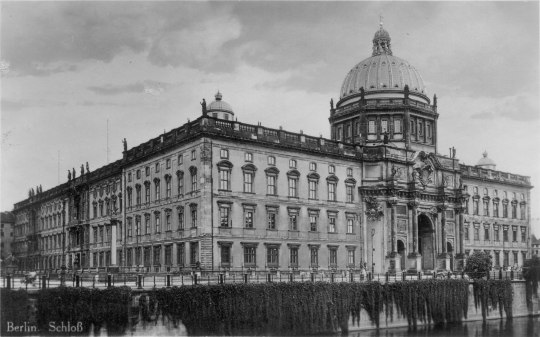
Photo of the north-eastern front of the Stadtschloss in the 1920s.
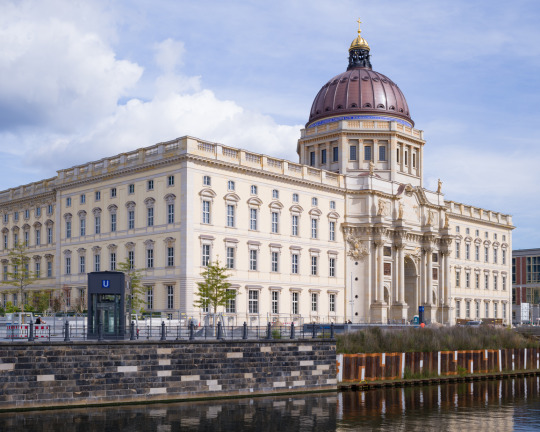
Photo of the north-eastern front of the Stadtschloss of September 2022, by Frank Schulenburg.
At present, it does not look like it. When Prinz Ferfried von Hohenzollern died about a month ago, there were no reports of the White Lady having made an appearance. But who knows? Perhaps on a dark autumnal night, as the street lanterns cast a sparse glimmer over the river Spree, and not a light shines from the windows of the new Stadtschloss, you might be (un-)lucky enough to spy her...?
...But always remember that if you do, you're most likely to have encountered a modern-day Philippinette.
Happy Halloween, everyone!
#halloween#spooky season#history#17th century#18th century#ghost stories#ghosts#weiße frau#white lady#karl ludwig von der pfalz#liselotte#liselotte von der pfalz#friedrich wilhelm i#friedrich i#sophie luise von mecklenburg-schwerin#kunigunde von orlamünde#anna von sydow#saint cloud#berlin#stadtschloss#myths and legends#german history#french history#my history posts
71 notes
·
View notes
Photo




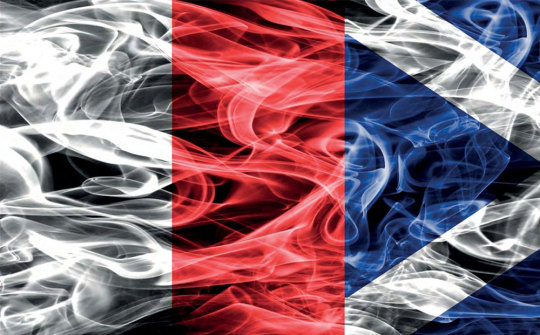



On October 23rd 1295 the “Auld Alliance” treaty was signed between John Balliol, King of Scots, and Philippe IV of France.
The treaty stipulated that if either Scotland or France was attacked by England, the other country would invade English territory. However, this wasn’t quite as even-handed and mutually helpful as it seemed. For one, because the English had lands in France, all the French were required to do was continue their struggle against the English on their soil.
The cost of any outright war between Scotland and England, meanwhile, had to be borne entirely by the Scots.
But for a tiny nation like Scotland, alliance with mighty France was of great symbolic importance – even if it didn’t stop the English frequently invading Scotland during the centuries the Auld Alliance ran.
If you read my posts you will have seen the mention of battles fought, not only in England, but on French soil, where Scots fought and died, we were regarded as elite soldiers.
Shakespeare’s ‘Henry V’ rightly portrays the Battle of Agincourt in 1415 as one of England’s greatest military victories. For the French it was a disaster that led to the near collapse of their kingdom. In their darkest hour the Dauphin turned to the Scots, England’s enemy, for salvation.
Between 1419 and 1424, 15,000 Scots left from the River Clyde to fight in France. In 1421 at the Battle of Bauge the Scots dealt a crushing defeat to the English and slew the Duke of Clarence.
Honours and rewards were heaped upon the Scots army by the French. The Earl of Douglas was given the royal Dukedom of Touraine and the Scots army lived well off the land, much to the chagrin of the French peasantry.
Their victory was short lived however; at Vernuil in 1424 a Scots army of 4,000 men was annihilated. As mercenaries they could have expected no mercy and those who were captured were dispatched on the spot. Despite their defeat, the Scots had brought France valuable breathing space and effectively saved the country from English domination.
Many Scots continued to serve in France. They aided Joan of Arc in her famous relief of Orleans and many went on to form the Garde Écossais, the fiercely loyal bodyguard of the French Kings, where they were at the very heart of French politics.
Many Scots mercenaries settled in France although they continued to think of themselves as Scots. One such man was Beraud Stuart of Aubigny: a third-generation Scot immigrant, Captain of the Garde Écossais from 1493-1508, and hero of France’s Italian wars. To this day both he and other Scots heroes of the Auld Alliance are celebrated in Beraud’s home town of Aubigny-sur-Neve in an annual pageant.
The Auld Alliance wasn’t simply a military alliance; it was based on a long-established friendship founded on the Scots love of French wine.
The signing of the Auld Alliance in 1295 might have given the Scots French support against England, but it also gave the Scottish merchants the privilege of selecting the first choice of Bordeaux’s finest wines - a privilege which was eagerly protected for hundreds of years, much to the annoyance of English wine drinkers who received an inferior product.
French wine was landed on Wine Quay of Leith and rolled up the streets to the merchants’ cellars behind the water front. The wine landed was mostly for the elite of Scottish society, with most commoners drinking whisky or beer, but it seems to have been popular with everyone for Hogmanay celebrations.
Trade, especially of wine, has a tendency to fly in the face of political changes and alliances. After the Reformation, the Auld Alliance was no longer feasible between Protestant Scotland and Catholic France, but the trade in Claret continued. People simply kept drinking it.
An example of this process can be seen in the post-Reformation destiny of St Anthony’s fund: a charitable fund raised on the back of the wine trade. The fund was simply converted to Protestantism by King James VI and passed onto the Old Leith Parish Church.
As late as the 1670s, Scots merchants were still going to Bordeaux to get their first choice of wine. Even after the Union of Parliaments with England in 1707, Scots continued to smuggle Claret into Scotland to avoid taxes. Scots of all persuasions, Jacobite or Hanoverian, continued to drink Claret in preference to patriotic Port - especially when toasting the exiled Stuart kings as 'the King over the water’.
21 notes
·
View notes
Photo
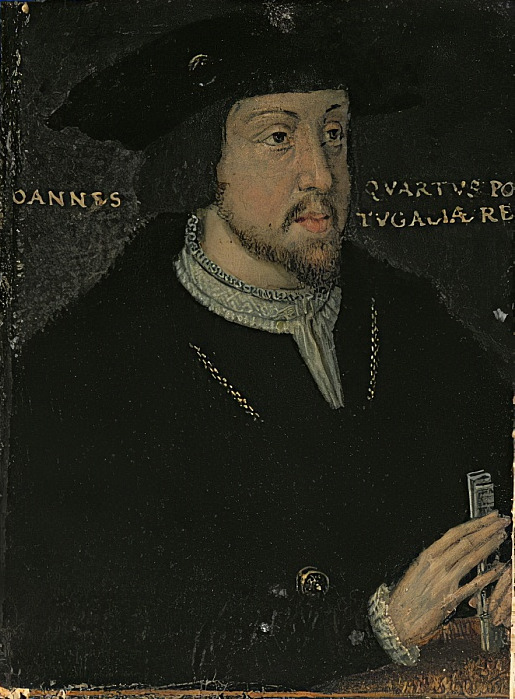
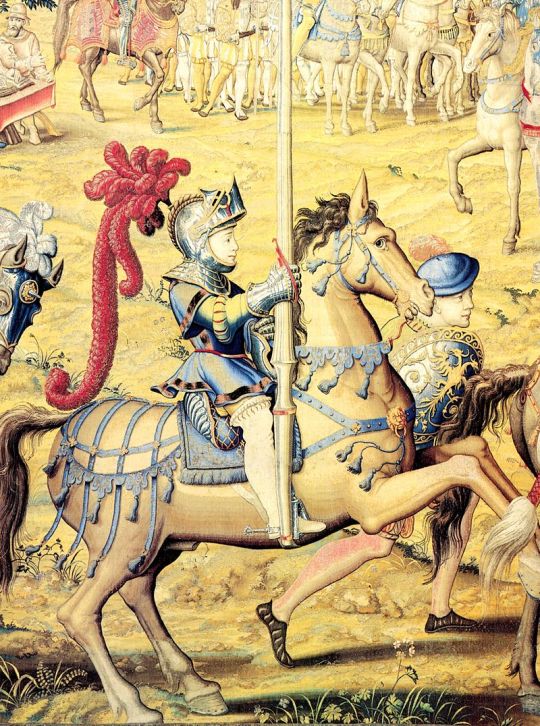
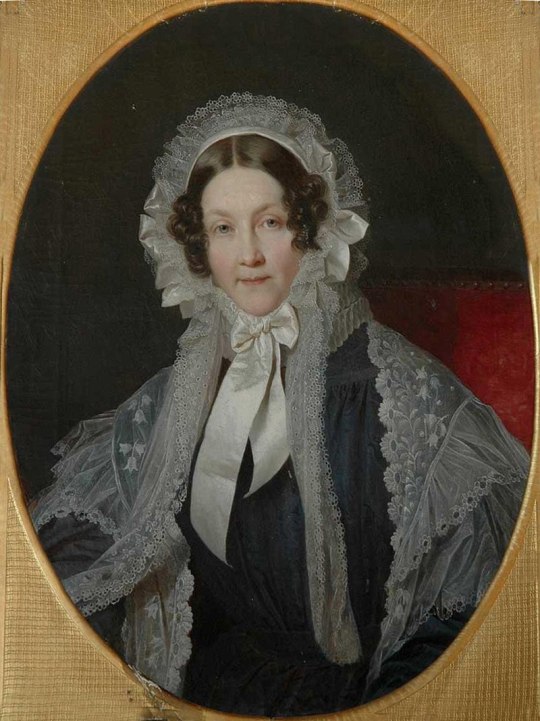


Royal Birthdays for today, March 3rd:
John II, King of Portugal, 1455
Luís of Portugal, Duke of Beja, 1506
Frederica of Mecklenburg-Strelitz, Queen of Hanover, 1778
Charles-Philippe of Orleans, Duke of Anjou, 1973
Maria Francisca, Portuguese Infanta, 1997
#john ii#luis of portugal#infanta maria francisca#charles philippe of orleans#Frederica of Mecklenburg-Strelitz#long live the queue#royal birthdays
8 notes
·
View notes
Text

Aro Volturi- his look is a mix of Michael Sheen's portrayal and Alexander Vlahos who played Duke of Orleans Philippe.
I think I made his hair too long but other than that I really like how he turned out.
52 notes
·
View notes
Text

🩸Darkest Dungeon Crimson Court but Chevalier de Lorraine🩸
#small artist#small artwork#chevalier de lorraine#versailles#evan williams#monchevy#versailles fanart#alexander vlahos#philippe duke of orleans#versailles season 2#darkest dungeon#crimson court#vampire#bloodsucker
33 notes
·
View notes
Photo

Mini portrait bracelet of Henri-Eugene-Philippe-Louis of Orleans, Duke of Aumale, 1823, France.
42 notes
·
View notes
Text

Honoré Daumier. [Honest reward, decreed, in 1800, to Louis Philippe of Orleans, surgeon and immigrant, but always French, by the not very delicate savages of North America.] Published in La Caricature, 19 February 1835.
This caricature alludes to the exile of Louis-Philippe Duke of Orleans (who became Louis-Philippe I King of the French in 1830) in North America from 1797 to 1799.
3 notes
·
View notes

